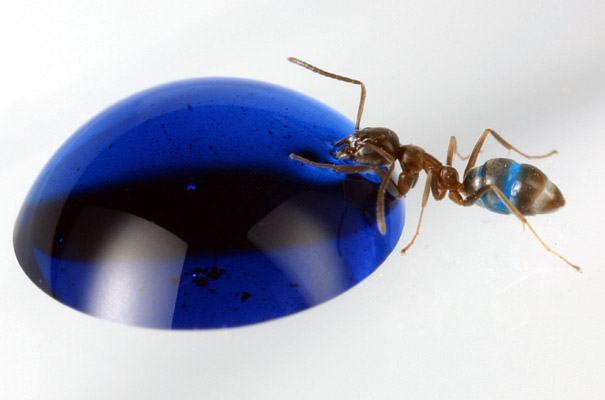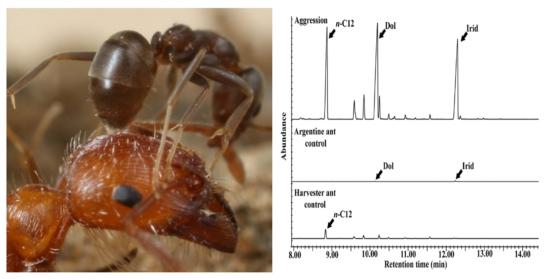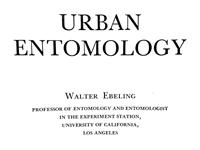Ant

1. Argentine ant behavior ("lure-and-kill")
Social insects such as ants, honeybees, and termites use a diverse array of pheromones for organization and coordination of all aspects of their colony development and maintenance. In particular, the trail pheromones of ants are known to play critical roles in their foraging and nest relocation activities. The trail pheromone of the Argentine ant has been the focus of numerous studies because of its significance in the species’ mass recruitment behavior. Cavill et al. (1979) first isolated and characterized (Z)-9-hexadecenal from Argentine ants, and concluded that (Z)-9-hexadecenal might be a component of the trail pheromone complex of the species. Although the deposition of (Z)-9-hexadecenal on the trail by recruiting ants has been called into question (for example, Choe et al. 2012), the chemical has been studied primarily as a trail pheromone component of the Argentine ant. We are exploring the use of (Z)-9-hexadecenal to attract Argentine workers to an area treated with insecticide, thereby maximizing the efficacy of insecticide sprays applied in the urban environment. This “lure-and-kill” approach utilizing the synthetic pheromone would be advantageous over conventional, stand-alone applications of insecticide spray because the insecticide/pheromone treated surface (soil, cement, wood) will attract foraging ants from nearby trails and even from the nest entrances and maximize the number of ants exposed to the treated surface.
The "lure-and-kill" approach can be also used for current bait products. It is particularly important to speedup the initial discovery and consumption of the bait by foraging ants because the baits typically lose moisture quickly, and once they lose moisture, the baits become less palatable. The video below (video credit: Kevin Welzel) shows that the bait with pheromone added (top dish) attract a lot more ants in a shorter period of time than the untreated standard bait (bottom dish).
2. Chemical ecology of Argentine ant

In a recent paper, we reported that Argentine ants utilize glandular secretions for inter and intra-specific communications during aggressive interactions with a heterospecific competitor, California harvester ant (Pogonomyrmex californicus). Chemical analyses indicated that Argentine ants deploy glandular secretions containing two major volatile iridoids, dolichodial and iridomyrmecin, on the competitor’s cuticular surface during aggressive interactions. Bioassays indicated that the glandular secretions function as a defensive allomone, causing high levels of irritation in the heterospecific. Furthermore, the same glandular secretions elicited alarm and attraction of conspecific nestmates, potentially enabling more rapid/coordinated defense by the Argentine ants. Two major volatile constituents of the glandular secretion, dolichodial and iridomyrmecin, were sufficient to elicit these responses in conspecifics (as a mixture or individual compounds).
3. Insecticide and Argentine ant control
We study which insecticides can provide the most effective Argentine ant control with minimal environmental impact.
4. Argentine ant detection
We explore the most effective and accurate method in detection Argentine ant populations in the field.
5. Novel methods for Argentine ant IPM
We are trying to develop the most effective IPM strategies for Argentine ant populations in residential, agricultural, and natural settings.
One of the recent research activity includes "development of biodegradable hydrogel systems to deliver aqueous liquid baits for Argentine ants". The use of liquid bait is considered as a low impact methods for managing ants in urban and agricultural settings. However, the need of bait stations has been a critical hurdle, preventing the baiting more broadly adopted in practical pest management program. Here, we are developing a new bait delivery system, which does not require the typical bait stations. Biodegradable hydrogel materials absorb sucrose solution containing tiny amounts of pesticide, allowing ants to feed from the hydrogel surface. Compared to conventional sprays, the use of this novel baiting technique might also dramatically reduce the amount of pesticides applied to the environment to achieve the required level of control .
See the video clip below for more information. The video clip is generated by Dr. Jia-Wei Tay (postdocotoral scholar in Choe Laboratory, UCR).






